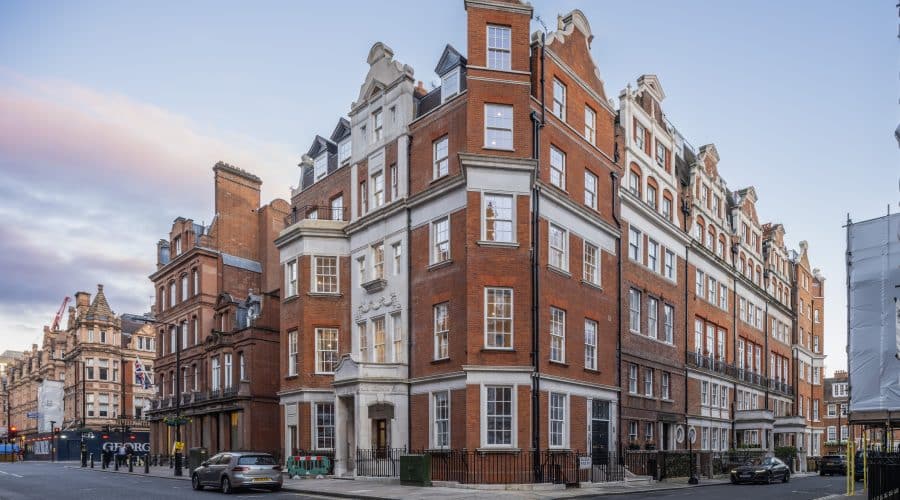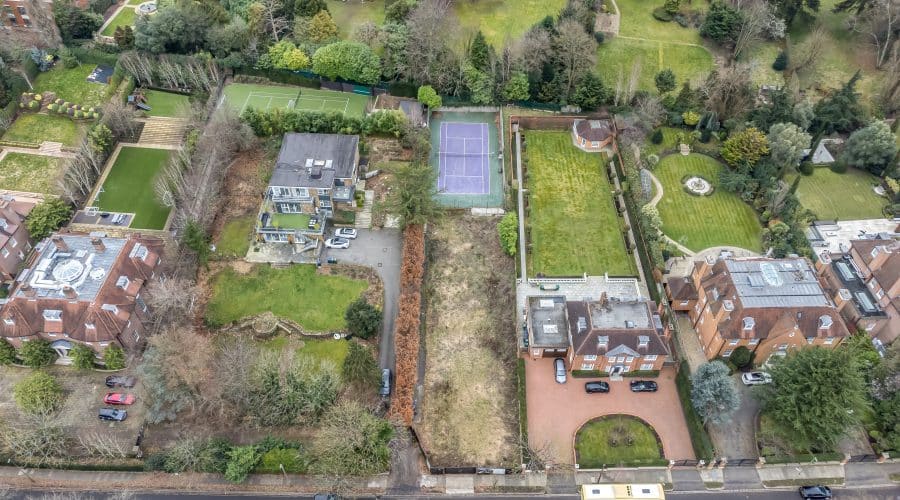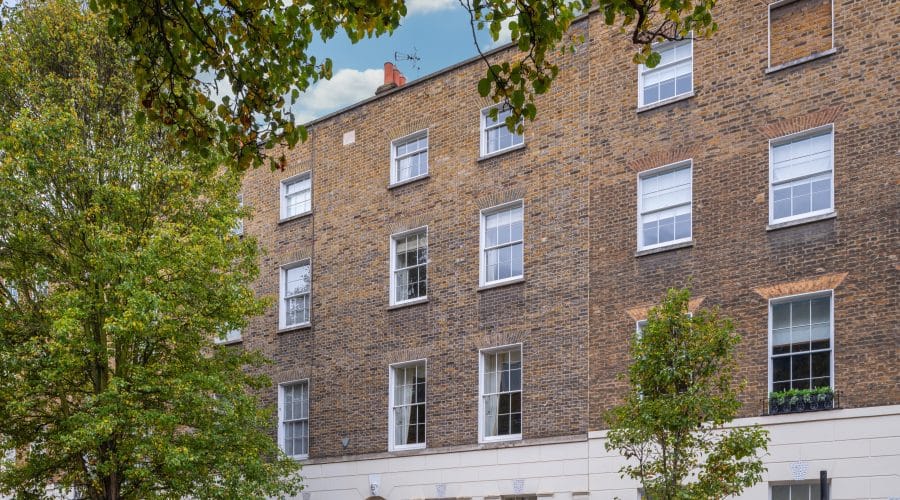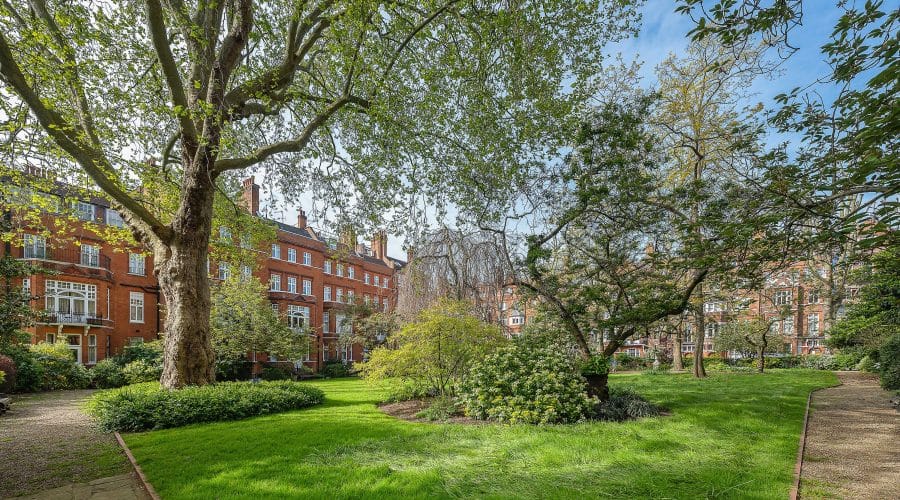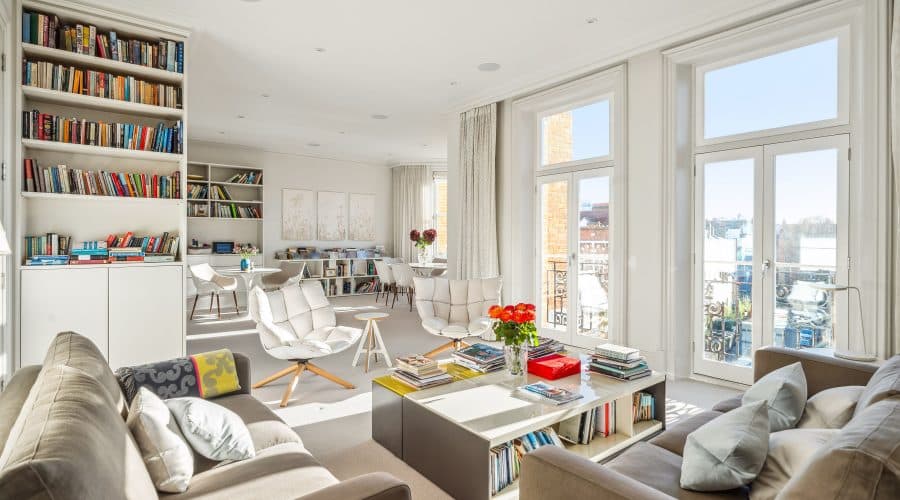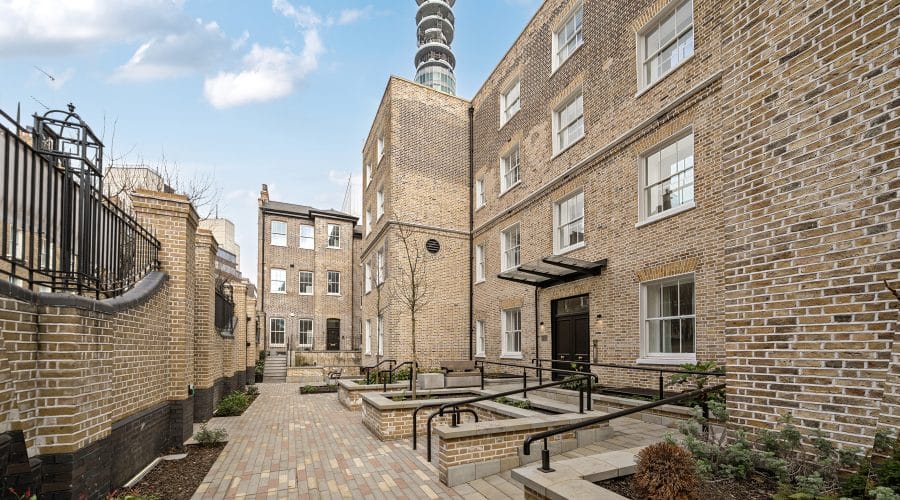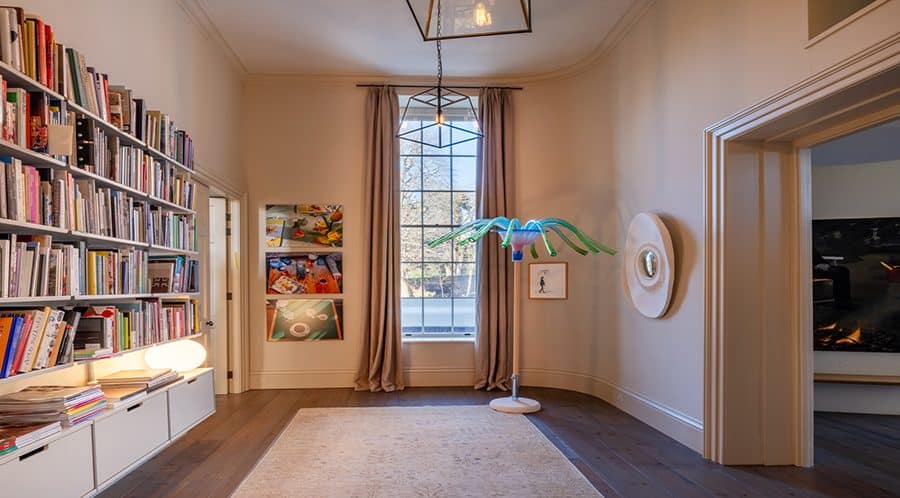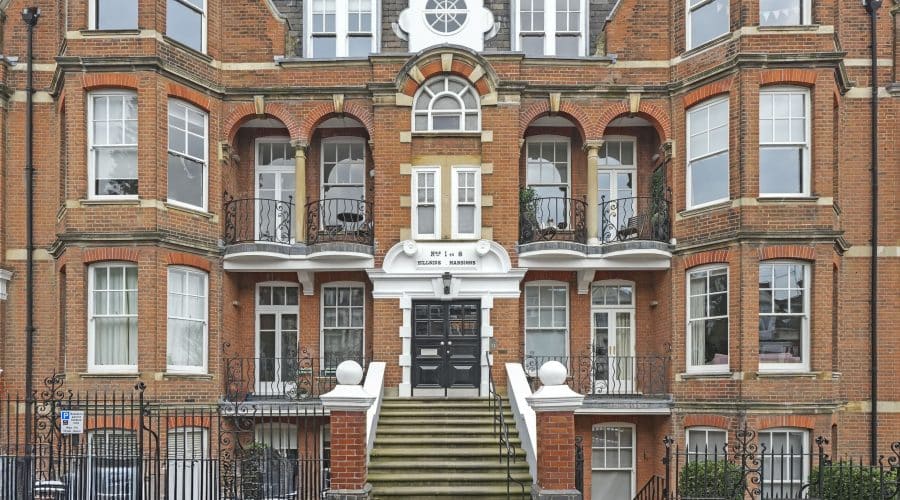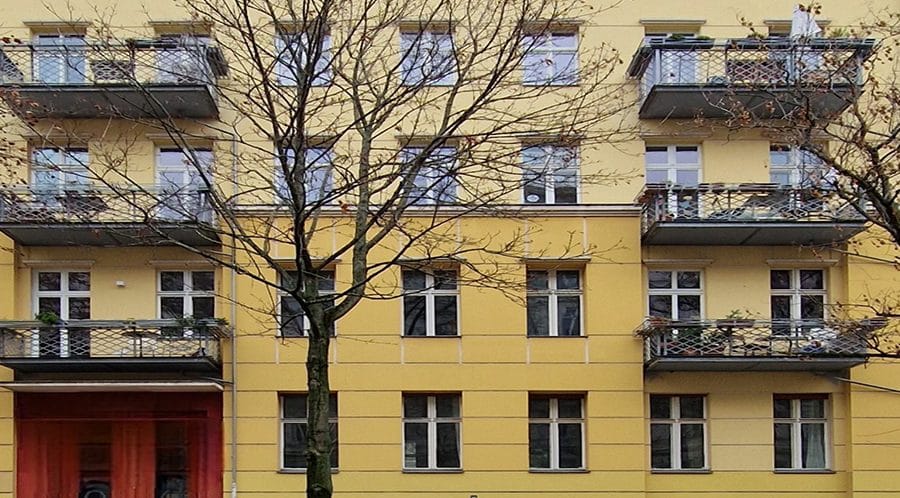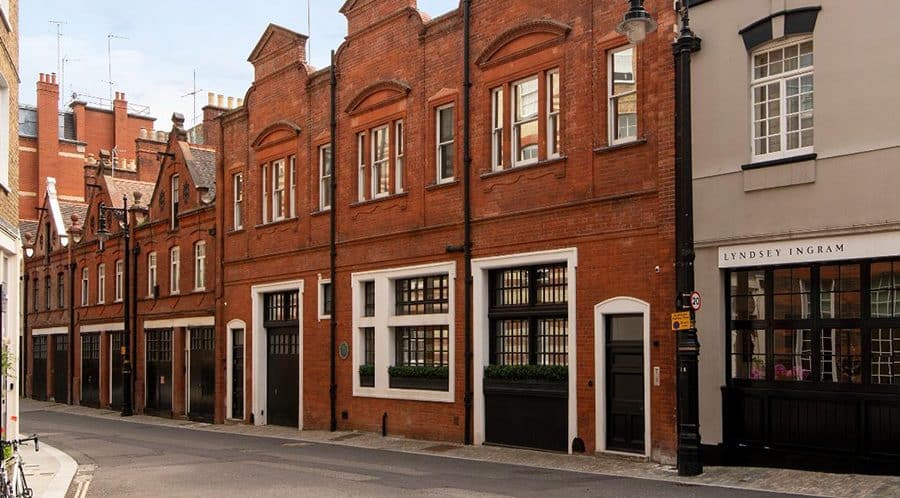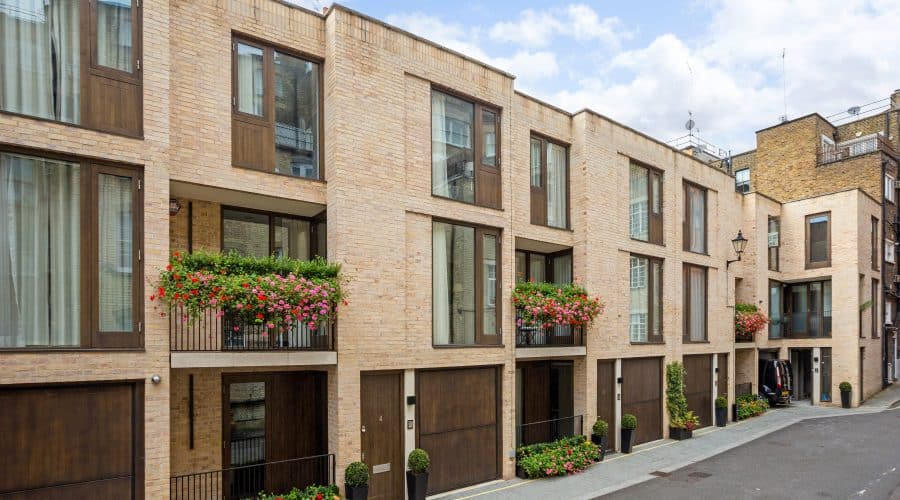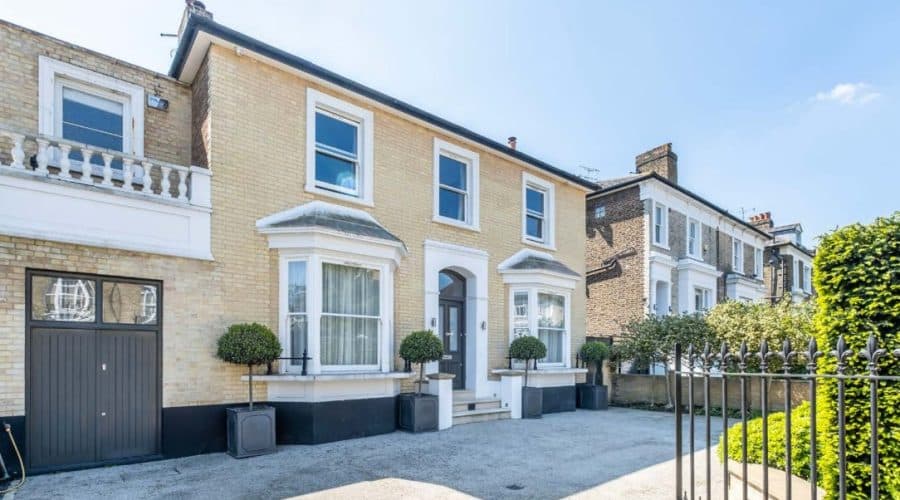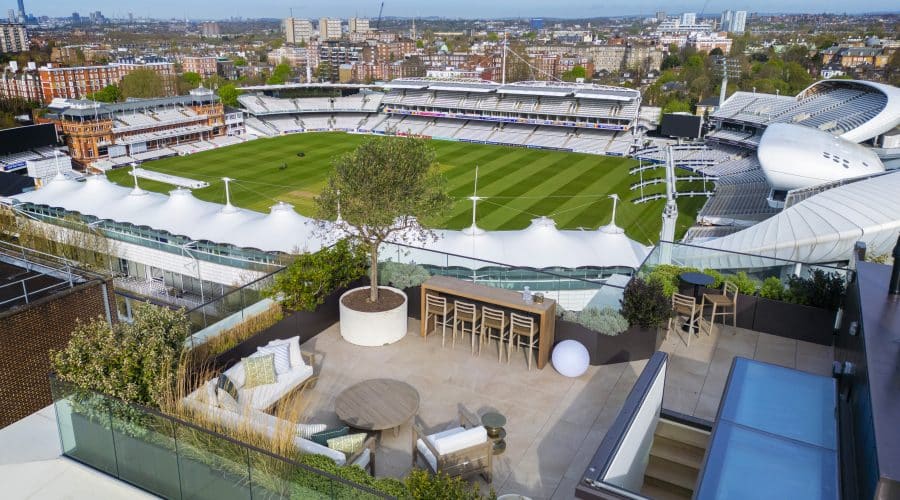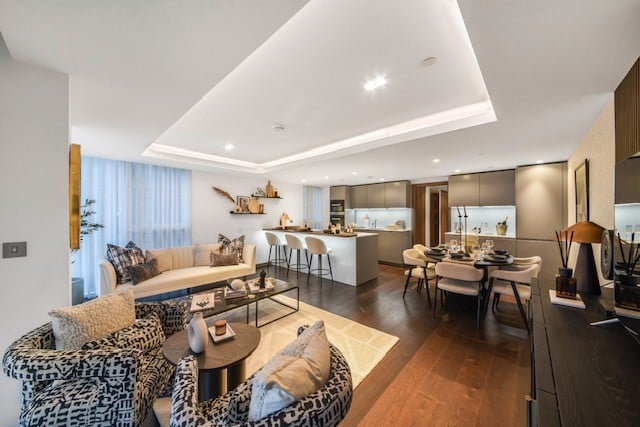These are the luxurious second lives of London offices, with sprawling views over the Thames.
By Sarah Rappaport and Damian Shepherd
Minutes from Parliament at Westminster, 9 Millbank used to be the headquarters of Imperial Chemical Industries, formerly the largest manufacturer in Britain, which once made products such as the acrylic plastic Perspex.
Now brokers are ushering high-net-worth clients, titans of industries and finance executives through the building to see apartments like one called the Gainsborough—listed for £18 million ($22 million)—that includes a wraparound terrace offering views over Lambeth Bridge, as well as period features such as a stained-glass window depicting the female allegory of Britannia, a symbol of imperial might.
On the other side of the palace of Whitehall, the Raffles London hotel just opened in September in a building that once housed the formidable Department of War, the UK’s engine of planning during both world wars. Top hotel suites are offered for £25,000 a night, and the penthouse in the residential portion of the Old War Office, or OWO, is expected to fetch as much as £100 million.
Squeezed for space in prime central London, developers are turning what were formerly executive corporate boardrooms, department stores and civil servants’ offices into high-end apartments and luxury hotels. Limited places to build has high-end developers putting historic buildings in their sights, despite the challenges and higher costs of working with listed, or landmarked, buildings.
“American clients have been loving the history and charm of some of these older buildings,” says Will Watson, partner at the Buying Solution, a property agency that represents buyers. “What puts off a lot of international buyers in London is a lot of our properties are old and higgledy-piggledy, floors are uneven, you can’t get air conditioning, but when you get something as luxurious as the OWO, those concerns don’t matter anymore.”
In the converted properties, buyers love getting the stately features combined with the modern amenities—gyms, pools and, yes, even air conditioning—of the upgraded spaces. The storied histories of these buildings have been a plus for buyers who want to claim a piece of British history.
Large-scale development opportunities in prime central London are few and far between, says Toby Downes, London specialist at property advisory Haringtons. “These big landmark sites are all developed or being developed,” he says. “The stock just doesn’t exist the way it did 15 years ago.”
Meanwhile, a quarter of London businesses are trimming office space, according to a Bloomberg survey earlier this year. Central London has an office vacancy rate of about 8.5%, representing around 20 million square feet of empty space, according to a reportfrom broker CBRE Group Inc. That could equate to an estimated 28,000 homes if converted into residential buildings, the company says.
But it’s tricky. Many empty offices in the capital aren’t entire buildings but sit alongside other tenants. And the heavy costs associated with making a building fit for living can also deter conversions. Local authorities can also be obstacles, wanting to maintain offices to protect employment.
It’s not just a London problem. Less than a third of global Class C offices, generally defined as buildings over 20 years old in need of work, can be converted to housing, according to an analysis of almost 1,000 buildings by architecture firm Gensler.
“Physically, not all office structures can enable sufficient capacity, daylight, ventilation and vibration standards without the need for significant modification,” says Zoe Bignell, head of UK development advisory at CBRE.
Across Hyde Park on the edges of Westminster, the Whiteley, an historic office building that once housed one of London’s first department stores, is being converted into apartments that start at £1.5 million. It will also contain luxury hotel brand Six Senses’ first property in the UK. It is set to open next year.
The developer, Finchatton, was allowed to demolish everything besides the facade, because the concrete inside was failing. The building now has solar panels and upgraded cooling and heating systems.
“It is more challenging to work on these,” says Alex Michelin, founding partner of Finchatton. “On the Whiteley, we had these incredible windows but needed to find someone to restore them. And we found one guy in the North of England who could do the work, but he couldn’t do it all himself, so we had to work with him to train people to get these windows up to modern standards.”
Michelin says that you would have never been able to knock down a listed building, but the appetite for refitted buildings is there now in a way that it wasn’t 10 years ago.
“The Whiteley was an unloved shopping center, desperately in need of a reinvention,” he says. “We had a vision of what this could be and just decided to go for it. It’s what we love about London—these incredible historic buildings.” One of Michelin’s next projects is the transformation of the former Connaught Chapel, a listed building in St. John’s Wood that was previously a commercial office and TV recording studios.
Watson says his clients, who generally have budgets of £5 million and up, don’t have the patience for refurbishment projects and want them ready to move in immediately.
But it’s not just enough to be in central London. You have to be in the right part of central London for a property to be a surefire hit—and that’s not necessarily the case with properties in neighborhoods like Whitehall, which is home to Parliament and the office of the prime minister. As home to corporate and government offices, the neighborhoods grew over the decades to cater to those types of inhabitants.
Westminster can be quiet on weekends, and the area around the Whiteley is in the process of undergoing a massive transformation project that will include a new entrance to Kensington Gardens, as more upscale shops and restaurants open nearby. Still, you’re not likely to want to borrow a cup of sugar from your neighbors at the OWO: the Ministry of Defence and the Department for Energy Security and Net Zero. Meanwhile, MI5 sits next door to 9 Millbank.
“The difficulty is the location,” says Camilla Dell, managing director and co-founder of agency Black Brick. “Most of my clients buying at the upper price range want to be by Bond Street and their private members clubs in Mayfair.”
Before the Raffles London hotel opened, along with its nine restaurants and three bars, one potential buyer was turned off from an apartment at the OWO because there was nowhere nearby to get a great coffee, says Jo Eccles, founder of high-end estate agency Eccord.
The transformation of buildings like the OWO has changed the makeup of one of London’s most famous neighborhoods. A recent visit on a Wednesday found it buzzing, with tourists, residents and Westminster workers filling up the building in the after-work hours.
“You can buy a glass tower anywhere,” Michelin says. “But when you move into the Whiteley, it’s clear you’re in a historic building in London.”
